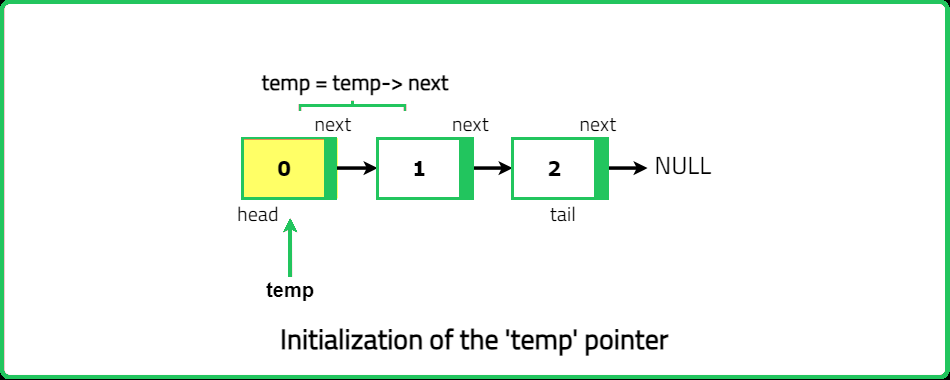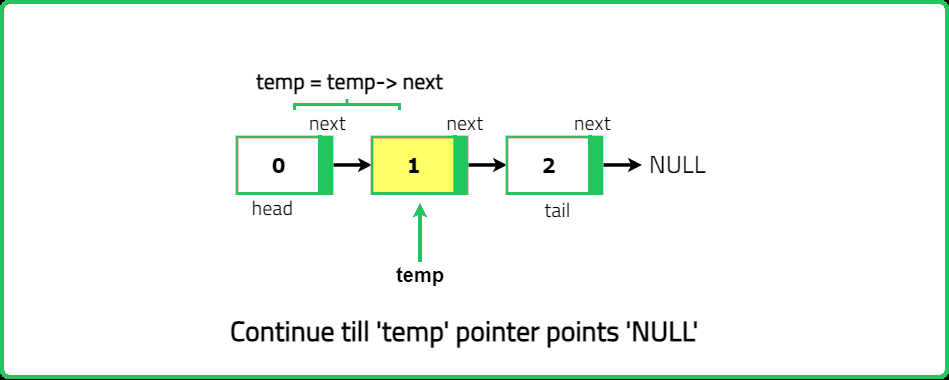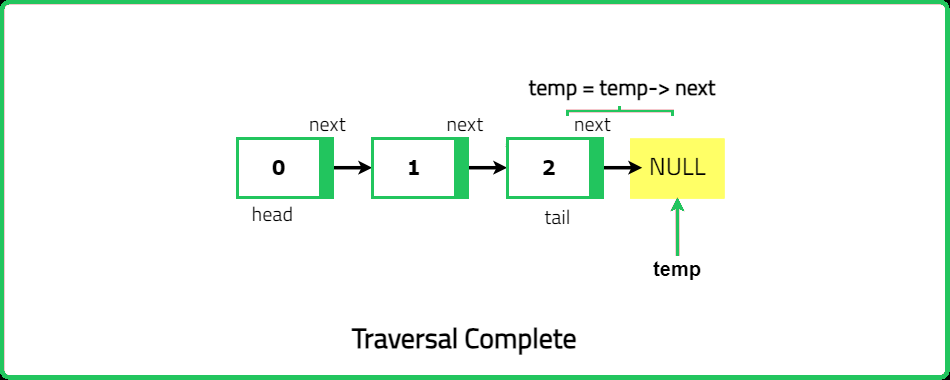Traversal in Linked List
Linked-List
Fundamentals (Single LL)
Easy
Given the head of a singly Linked List. Traverse the entire Linked List and return its elements in an array in the order of their appearance.
Examples:
Input: head -> 5 -> 4 -> 3 -> 1 -> 0
Output: [5, 4, 3, 1, 0]
Explanation: The nodes in the Linked List are 5 -> 4 -> 3 -> 1 -> 0, with the head pointing to node with value 5.
Input: head -> 1
Output: [1]
Explanation: Only one node present in the list.
Input: head -> 0 -> 2 -> 5
Constraints
- 0 <= number of nodes in the Linked List <= 105
- 0 <= ListNode.val <= 104
Hints
- Start at the head node. Use a loop to traverse through each node of the linked list.
- Initialize an empty array to store the values. Use a pointer to traverse the list. When the pointer becomes null or None, the traversal is complete.
Company Tags
Zoho
Freshworks
McKinsey & Company
Splunk
Robinhood
Micron Technology
Bain & Company
MongoDB
Philips Healthcare
HCL Technologies
American Express
Uber
OYO Rooms
PwC
AMD
Cerner
Broadcom
ARM
Walmart
Ubisoft
Etsy
Teladoc Health
Nutanix
Alibaba
Goldman Sachs
TCS
Cognizant
Accenture
Infosys
Capgemini
Wipro


